The Basque territory was settled by the Romans between the first century BCE and the fourth century CE. It was during this period that they founded the city of Oiasso, known today as Irun, in today’s Autonomous Community of the Basque Country. The city stands at the mouth of the Bidasoa River in the province of Gipuzkoa on the border with France and Navarre. Irun is the second-largest city in the province, after the capital, San Sebastian (just 17 km away), and has a population of around 62,000. It holds a strategic position as one of the main border crossings between France and Spain.
Archaeological investigations in recent decades have identified the location of the town of Oiasso, referred to in classical texts by Strabo, Pliny and Ptolemy. The geographer Strabo, who lived during the reign of Augustus and Tiberius, wrote that the polis of Oiasso was one of the towns in the region of Pompaelo (Pamplona) “on the very edge of the Ocean”, which lay “just at the border between Aquitaine and Iberia”. Numerous remains of the Roman settlement can still be seen, including the burial ground in the chapel of Santa Elena, the mineworks in the Aiako Harria area, the port facilities unearthed on Calle Santiago and Calle Tadeo Murgia in Irun and the baths located behind the present-day Oiasso Roman Museum.
Every July since 2010, the town has staged a historical recreation of the period, known as the Dies Oiassonis. It’s a novel way to learn more about Irun’s Roman past and enjoy yourself at the same time. Another major event is the Bidasoa International Archaeological Film Festival (FICAB), held every autumn since 2001. The festival give the general public a window onto the archaeologist’s work, with films showing the results of their research.
OIASSO – Irun, Euskadi
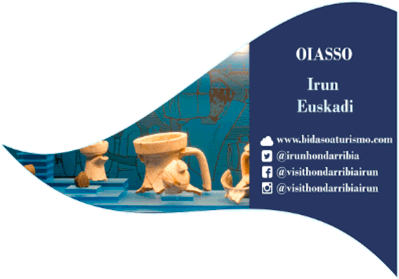
Oiasso Roman Museum
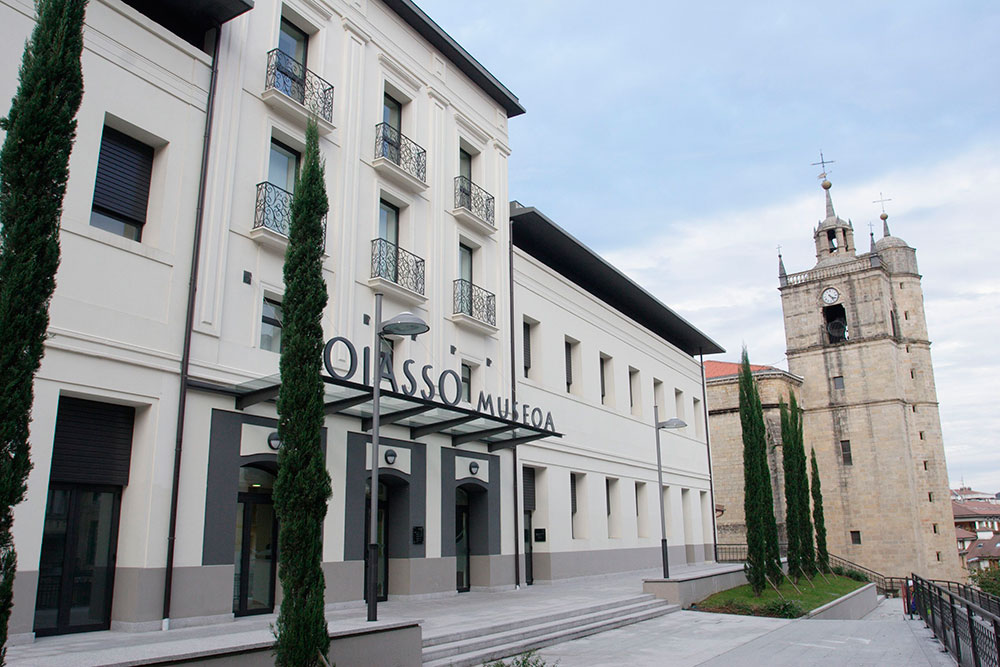
Irun’s Oiasso Museum is an archaeological municipal museum which contains all the Roman remains uncovered in the vicinity of the old city of Oiasso. Its aim is to promote the region’s archaeological heritage and become a benchmark for knowledge and dissemination of the Roman period in the Bay of Biscay. The museum offers visitors the opportunity to learn about Oiasso in a fun, entertaining way, through a series of special areas which focus on the impact of the arrival of the Romans on the native society, the archaeological discovery of the old port and everyday life in the city during the 1st and 2nd centuries AD.
Calle Eskoleta, 1
20302 Irun
GPS Coordinates:
Latitude: 43,340046
Longitude: -1,787799
www.oiasso.com
info-oiassomuseo@irun.org
Phone: +34 943 63 93 53
Timetable
October to May
- Tuesday, Wednesday, Thursday and Sunday: 10:00-14:00
- Fridays and Saturdays: 10:00-14:00 / 16:00-19:00
- Monday and Sunday afternoon closed
June to September
- From Tuesday to Saturday: 10:00-20:00
- Sundays: 10:00-14:00
- Monday and Sunday afternoon closed
Santa Elena Burial Ground
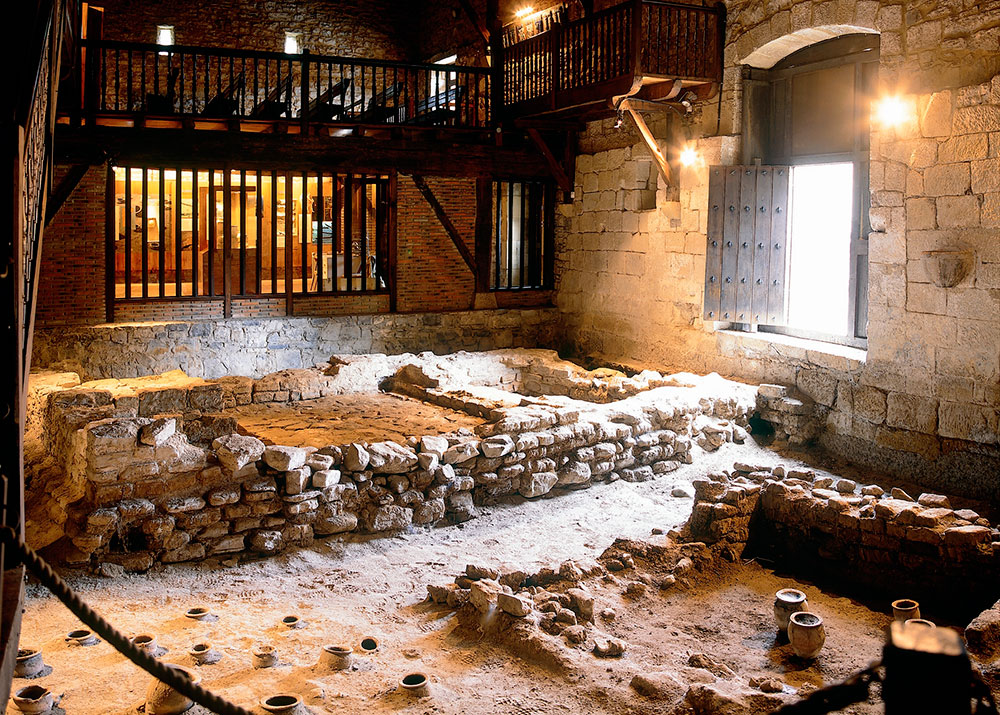
The burial ground or necropolis of Oiasso was discovered inside the medieval chapel of Santa Elena. Urns bearing ashes were found together with funerary items including pottery vessels, bone hairpins, and fíbulae, among other items.
Collections of some of the most important items are on display inside the chapel. They give an idea of the way of life of the city’s inhabitants, which was similar to that of other Roman towns along the Atlantic rim.
The foundations of two buildings believed to be mausoleums were also located next to the burial sites. The larger of the two was reused in the tenth century by Duke Sancho William of Aquitaine as a Christian church, with the incorporation of an altar. A chapel was later built on the site and it is still used for religious purposes to this day.
Calle Ermita, 2
20304 Irun
GPS Coordinates:
Latitude: 43.335478
Longitude: -1.785275
www.oiasso.com
info-oiassomuseo@irun.org
Phone: +34 943 63 93 53
Timetable
Guided tours (by prior appointment. Phone: 943 63 93 53).
Every Saturday at 11 am
Irugurutzeta Mines
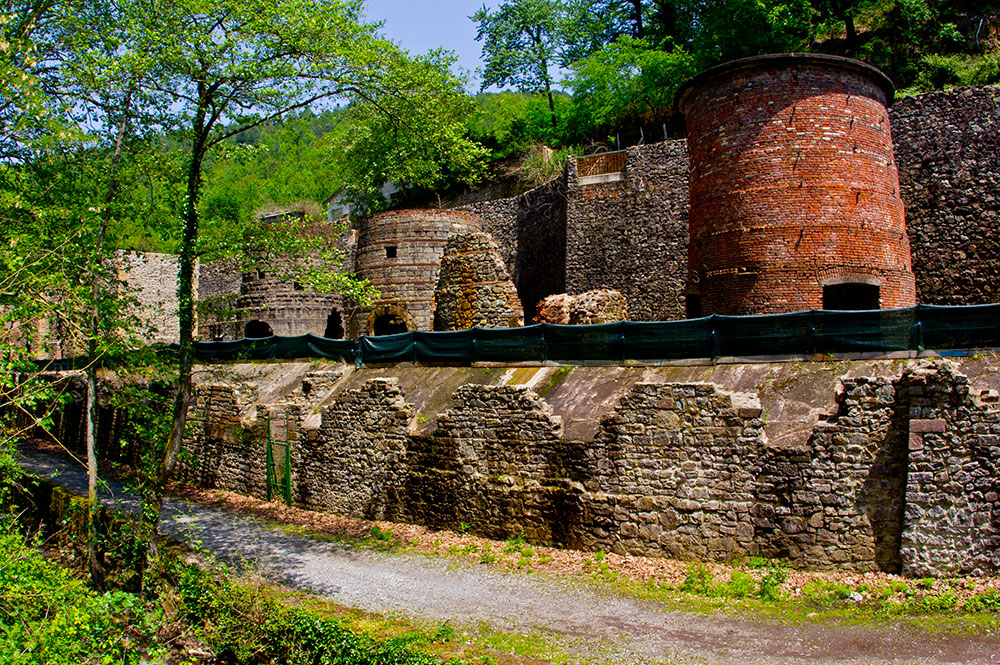
The Irugurutzeta heritage site includes a set of mine galleries and a furnace where the ore was calcined. A mine train takes visitors from the museum through the natural surroundings of the mines.
Although mining began at Aiako Harria and the surrounding area during the Roman period, the structures on display today date from twentieth-century iron mining operations.
The ore was transported from the mine to the kilns on rail trucks in cable cars hanging from an overhead cableway. Once there, it was calcined in furnaces to turn it into oxide to increase the grade.
Meaka neighborhood, 110
20305 Irun
GPS Coordinates:
Latitude: 43.3179905
Longitude: -1.7722181
www.oiasso.com
Phone: +34 943 63 93 53
info-oiassomuseo@irun.org
Timetable
Guided tours (by appointment at 943 63 93 53).
From September to June
- Every Sunday at 11: 00h.
From July to August
- Thursday, Friday and Saturday at 5:00 p.m.
Roman Baths
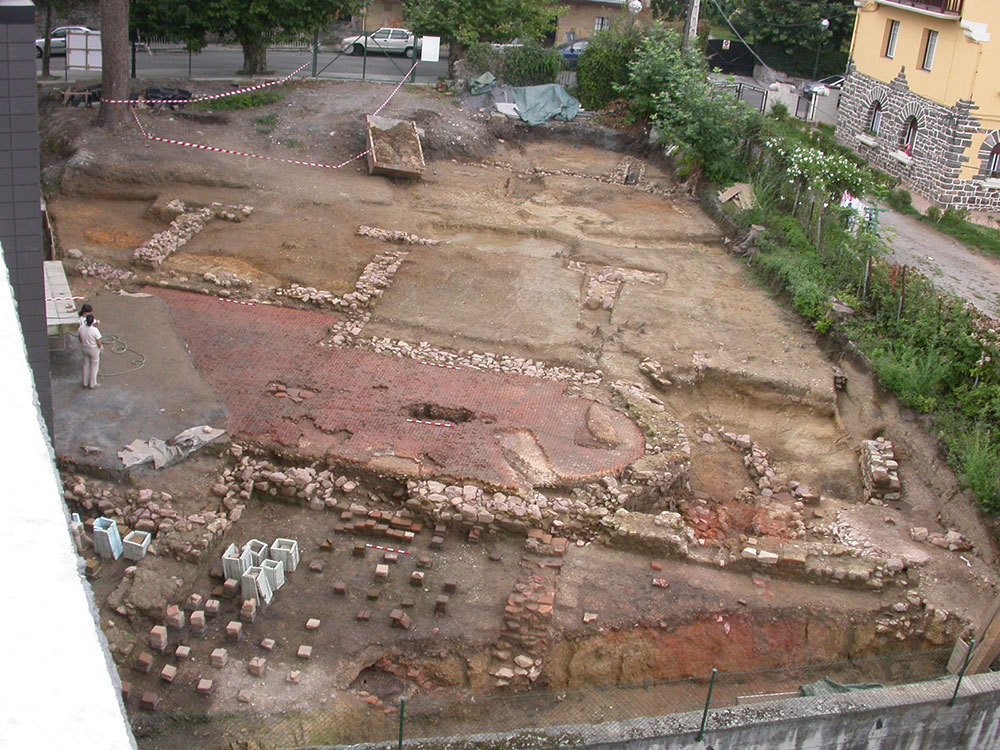
Roman thermae or baths contained different rooms with water at different temperatures. As well as bathing, they were also used for physical exercise and other leisure activities.
The public baths in Oiasso were located in the garden behind the museum. They have been excavated and are currently being prepared for museum display. The digs identified three rooms with a hypocaust—a form of underfloor heating system.
The largest room is the frigidarium or cold water room, which still has the opus spicatum paving, comprising bricks laid in a herringbone pattern. An augmented reality reconstruction helps visitors understand the original distribution and appearance of the baths.
ACCOMMODATION
Bidasoa offers its visitors several kinds of accommodation including hotels, guest houses, and flats all around the city. There are also two camp-sites, two youth hostels and many country lodges and farmhouses in which to enjoy the surroundings which, with their green landscape and year-round peace and quiet are simply perfect for visitors.
Come and stay and you can enjoy waking up in a Medieval quarter, enjoying a day’s shopping, having a peak into our Roman past, enjoying a mountain hike, chatting with a pilgrim on his way to Santiago or discovering a quiet place with a bird’s-eye view. Don’t let anybody get there before you.
RESTAURANTS
If there is something which Bidasoa cuisine has always been known for, it is the quality of its fresh produce, which is thanks to the sea-faring culture of its population. All restaurants have fish and sea-food on the menu, together with farm produce and the best locally-produced meat. The men and women of Bidasoa have known how to cleverly combine sea and land produce in their menus.
Culinary art has developed into a new high-class cuisine: signature cuisine that aims to keep all the taste of a fresh, natural and quality product, changing it as little as possible. Veritable artists of the kitchen work together to maintain and recoup old recipes and give a new air to cooking, bringing once again into vogue and innovating dishes of humble origins. True temples of gastronomy prepared to satisfy even the most refined palate.
Another gastronomic tradition which is very popular in the Bidasoa region are cider-houses. These are seasonal and open in January. The idea is that between one mouthful of food and the next you get up from the table and go and fill your glass with cider directly from the barrel. The normal menu is cod omelette, cod with peppers, a succulent beef chop and a dessert comprised of cheese, walnuts and quince jelly. All of this in an original setting in which undoubtedly you will want to repeat the experience.
In addition to haute and local cuisine, the region also offers a range of other places to eat, offering a variety of different styles of food.
Tourist Office
Plaza Luis Mariano, 3
20302 Irun
GPS Coordinates:
Latitude 43.3397941
Longitude -1.7947363
www.bidasoaturismo.com
Phone: +34 943 02 07 32
turismo@bidasoa-activa.com
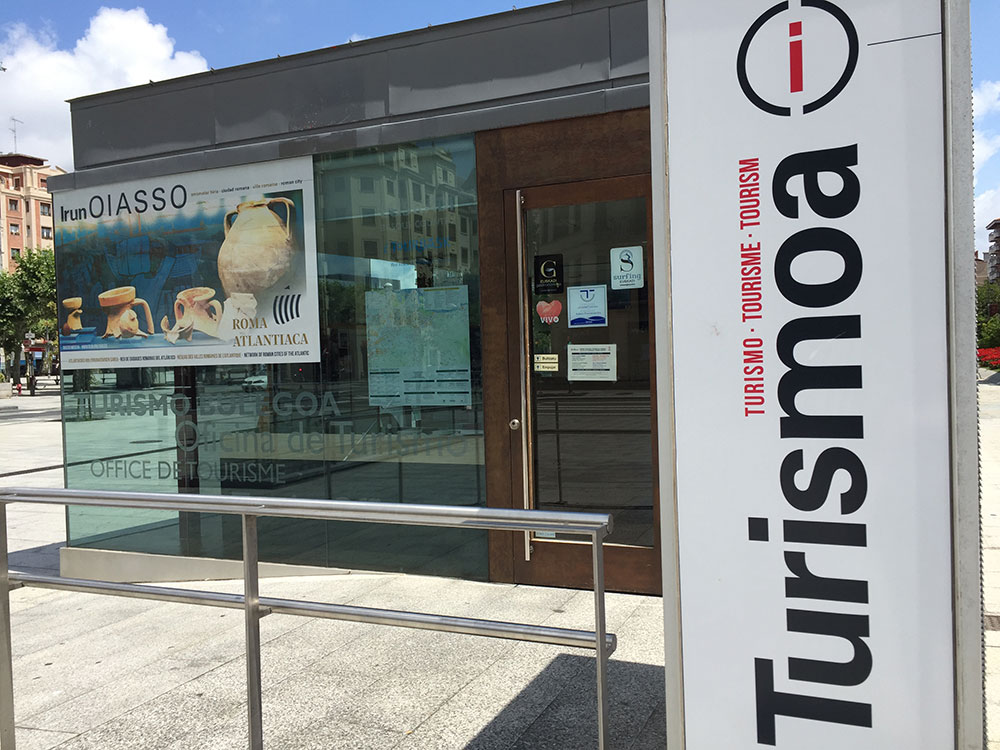
Timetable
- Winter timetable (From October to May):
Tuesday, Wednesday, Thursday and Sunday: 10:00-14:00
Friday and Saturday: 10:00-14:00 y 16:00-19:00
Monday and Sunday afternoon closed - Summer timetable (June to September):
From Tuesday to Saturday: 10:00 – 20:00
Sunday: 10:00-14:00
How to get here?
Irun is situated in Gipuzkoa province in the Autonomous Community of the Basque Country, near the mouth of the Bidasoa River and Txingudi Bay, and borders on both France and the Chartered Community of Navarre.
Irun is less than 30km from the airports of Biarritz and San Sebastián and is also a key location for rail and road transport, as the origin or destination of a large number of national and international trips. The city also promotes sustainable urban development by creating non-polluting routes such as bike paths and pedestrian-only streets.
By plane
- San Sebastian (Hondarribia) aiport
- Direct flights to Madrid and Barcelona.
- Biarritz international aiport
- Just 25 minutes from the bay along the A63.
- Daily flights to Paris: Orly and Roissy (Easy Jet and Air France)
- Daily flights to Lyon and Clermont-Ferrand
- Daily flights to London (Ryanair and EasyJet)
- Weekly flights to Dublin (Ryanair)
- Weekly flights to Helsinki (Blue1)
- Weekly flights to Marseille (Ryanair)
- Weekly flights to Lille (Local Company)
- In addition to Paris, Lyon, London, Clermont-Ferrand, Marseille, Nice, Geneva, Bristol, Dublin and Birmingham, there is 1 new destination from Biarritz:
- Amsterdam, 3 flights per week with Transavia.com.
By train
- Hendaye train station
- High speed train several times per day from Paris Montparnasse. Only 5 hours in train between Bidasoa-Txingudi and Paris!
- Hendaya – Paris – Genève – Vintimille
- www.voyages-sncf.com
- Irun train station
- Irun – Madrid, Spain and Portugal
- www.renfe.es
By car
The A63 (www.asf.fr/A63) and A64 (www.asf.fr/A64) motorways link Bidasoa-Txingudi bay to Bordeaux, Paris, Toulouse and Perpignan (north-bound) and similarly the A8 motorway to San Sebastian, Pamplona, Bilbao, Madrid and Barcelona (south-bound).
By boat
- Jolaski – +34 639 617 898 – www.jolaski.com
- Marie Louise – +33 (0)6 07 02 55 09
